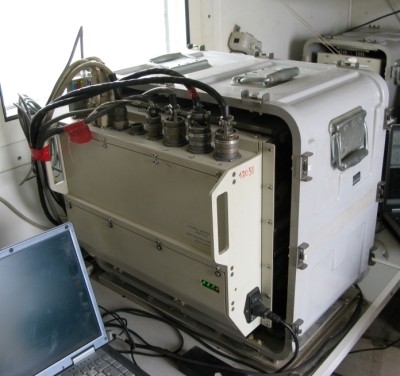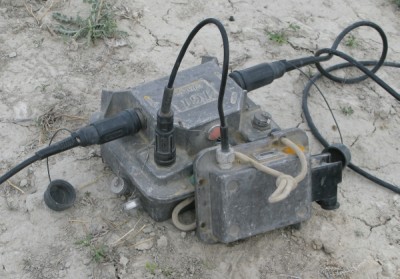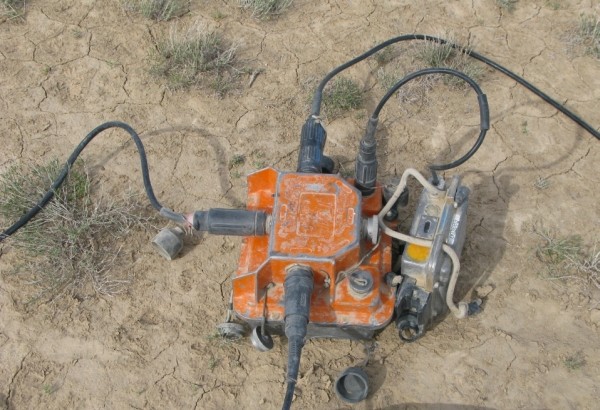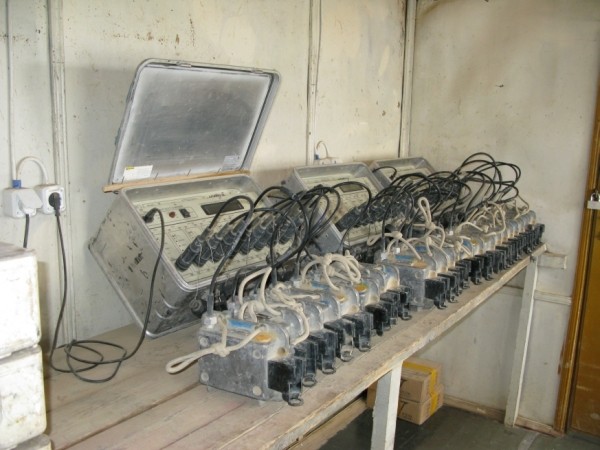







The GDAPS4 is an interesting system. I had never heard of it until I was asked to QC a crew in Kazakhstan in 2008.
The GDAPS4 is manufactured by JGI. Their website can be found here
http://www.jgi-inc.com/english/index.html
Unfortunately, they are either reluctant to, or unable to answer questions regarding the system. I tried several times by email and got no response.
The system itself appears a bit dated, and has some unusual features - 4 channels per box for example.
It also appears that development has ceased which is a pity as it is a system that actually shows potential.
My experience of it was on a small 2D job, where it perfomed fairly well, until a component failure in the control module. Unfortunately the contractor didn't have spares and the entire system was replaced with an IO System II.
The user interface runs under Solaris on a SUN Ultra 60, so it is already way ahead of anything IO have. Unfortunately it seems they did let some of their junior programmers loose and the interface suffers from some childish graphics (eg. a vibrator moving onto the screen at the start of a VP, shaking and then moving off at the end) instead of displaying useful statuses, but the software is stable.
Operational Deployment
The GDAPS4 is manufactured by JGI. Their website can be found here
http://www.jgi-inc.com/english/index.html
Unfortunately, they are either reluctant to, or unable to answer questions regarding the system. I tried several times by email and got no response.
The system itself appears a bit dated, and has some unusual features - 4 channels per box for example.
It also appears that development has ceased which is a pity as it is a system that actually shows potential.
My experience of it was on a small 2D job, where it perfomed fairly well, until a component failure in the control module. Unfortunately the contractor didn't have spares and the entire system was replaced with an IO System II.
The user interface runs under Solaris on a SUN Ultra 60, so it is already way ahead of anything IO have. Unfortunately it seems they did let some of their junior programmers loose and the interface suffers from some childish graphics (eg. a vibrator moving onto the screen at the start of a VP, shaking and then moving off at the end) instead of displaying useful statuses, but the software is stable.
Operational Deployment
One RSU acquires data from 4 channels. Each RSU requires a battery. The battery packs contained 2 x 7.2AH lead acid types inside a cast Aluminum case. Batteries would last around 16 hours if minimal line checks were done and noise monitoring is used sparingly.
Each line of RSUs is controlled by an SLCU (Slave Line Control Unit). This device controls and collects data from the RSUs and communicates with the MLCU (Master Line Control Unit) in the recording truck. There are 2 MLCUs, one for lines each side of the recorder if recording 3D.
The biggest criticism I have of the system is that real time monitoring of the line was not possible because of the battery capacity. For me, real time display of the line is a requrement, not an option. I'll forgive JGI for now though, as I see the GDAPS4 more as a development system than one they really intended to make a fortune from.
According to the manual (which isn't exactly the best) the system can record SEGY or SEGD to tape. On the job I was involved with, we used SEGD. I created a viewer for the GDAPS4 SEGD format. It is very much like the 408 Viewer described here but I am making it freely available for download, with the usual disclaimer that you use it at your own risk. The amount of information displayed reflects what is in the header. JGI do a better job than IO, but no where near as good a job as Sercel.
Anyone who requires a description of the file formats can contact me.
I will not post them here, as although they are probably not secret, they are copyright JGI.
I also wrote a quick test display program that will read the test result file and display a histogram reflecting the results. You can read about it and download it here.
Each line of RSUs is controlled by an SLCU (Slave Line Control Unit). This device controls and collects data from the RSUs and communicates with the MLCU (Master Line Control Unit) in the recording truck. There are 2 MLCUs, one for lines each side of the recorder if recording 3D.
The biggest criticism I have of the system is that real time monitoring of the line was not possible because of the battery capacity. For me, real time display of the line is a requrement, not an option. I'll forgive JGI for now though, as I see the GDAPS4 more as a development system than one they really intended to make a fortune from.
According to the manual (which isn't exactly the best) the system can record SEGY or SEGD to tape. On the job I was involved with, we used SEGD. I created a viewer for the GDAPS4 SEGD format. It is very much like the 408 Viewer described here but I am making it freely available for download, with the usual disclaimer that you use it at your own risk. The amount of information displayed reflects what is in the header. JGI do a better job than IO, but no where near as good a job as Sercel.
Anyone who requires a description of the file formats can contact me.
I will not post them here, as although they are probably not secret, they are copyright JGI.
I also wrote a quick test display program that will read the test result file and display a histogram reflecting the results. You can read about it and download it here.




GDAPS CRU
GDAPS RSU and Battery Pack On Line
The boxes are about the same size as an IO2 MRX. Smaller than a Sercel 388 Box.
The boxes are about the same size as an IO2 MRX. Smaller than a Sercel 388 Box.
GDAPS SLCU On Line
GDAPS Batery Chargers and Batteries

